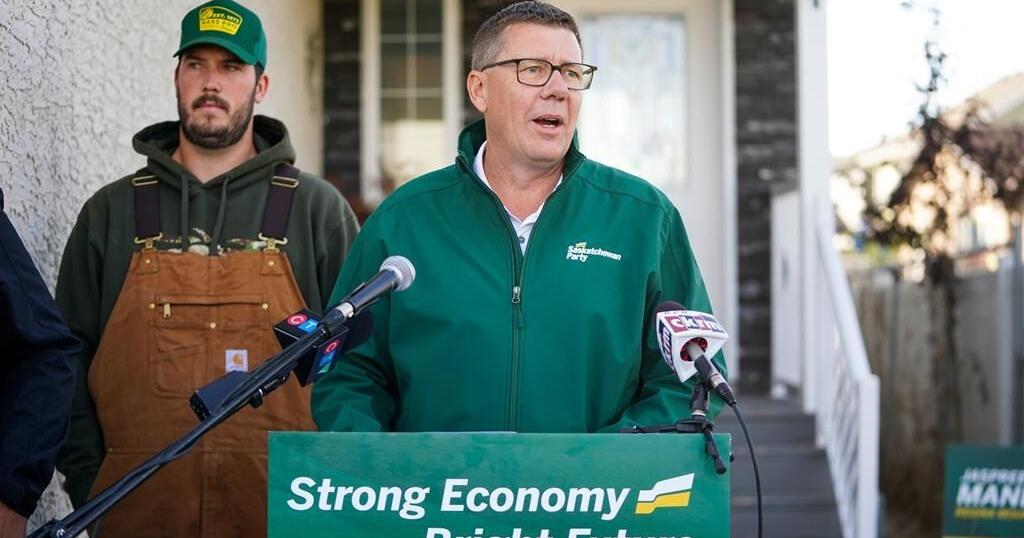SASKATOON – Saskatchewan Party Leader Scott Moe released his entire platform Saturday, pledging to spend $1.2 billion on his promises over four years if re-elected on Oct. 28.
Moe told supporters in Saskatoon his plan runs on the Saskatchewan Party’s record of growing the economy and population while making life more affordable.
It contains pre-announced commitments, including broad tax relief to reduce personal income taxes, an expansion to the Graduation Retention Program and additional rebates for families with children in sports and arts.
He also pledged to not continue paying the federal carbon levy on home heating to save people money.
The platform shows deficits in the first three years followed by a small surplus in 2027.
“We will not make promises that are costly and, I would say, irresponsible in many cases,” Moe said.
“It’s a plan for keeping life affordable for Saskatchewan families. It’s a plan for building Saskatchewan, and it’s a plan for our growing province, and our plan for investing in those very dividends of growth, into healthcare, into education and into so many services that are important to you and your family.”
But Carla Beck’s New Democrats say Moe’s fiscal plan does little to address problems in hospitals and classrooms.
Candidate Trent Wotherspoon said it shows no additional dollars for education and health care.
He said Moe’s balance sheet only shows an 0.8 per cent increase for government services spending. He added inflation is normally two per cent. Coupled with population growth, Moe’s figures would result in service reductions, he said.
“What surprises me is they would move forward with a plan that would cut those services, those emergency rooms, our classrooms that are already at a breaking point and cut them further,” Wotherspoon told reporters in Regina.
A Saskatchewan Party spokesperson responded in a statement, saying Moe’s last budget as premier shows record spending in education and health care.
The budget offered $7.6 billion for health and $2.2 billion for school divisions.
Moe took aim at Beck for calling his promises “trinkets.”
“They’re not trinkets,” Moe said. “They’re investments, direct investments in (people), in their lives and the lives of so many.”
Asked about that comment, Wotherspoon said some of the Saskatchewan Party’s past commitments have turned out to be broken promises.
He pointed to the campaign in 2016 where the Saskatchewan Party promised not to cut taxes but then raised them a year later in government.
“We have a government that can’t be taken at their word, and a government, frankly, that’s out of touch with the realities that Saskatchewan people are facing,” Wotherspoon said.
“Saskatchewan people know right now when it comes to health care, when it comes to education, when it comes to affordability, it’s time for change.”
Beck’s fiscal plan proposes an additional $3.5 billion in spending over four years, mostly to address overcrowding in hospitals and classrooms.
She’s also promised to pause the gas tax for six months and to remove the provincial sales tax from children’s clothes and ready-to-eat grocery items.
Beck has said she would pay for her promises by growing the economy and cutting $58 million in what she calls Saskatchewan Party waste.
Her plan shows small deficits in the first three years, followed by a small surplus in the fourth year.
This report by The Canadian Press was first published Oct. 12, 2024.
— By Jeremy Simes in Regina.
























